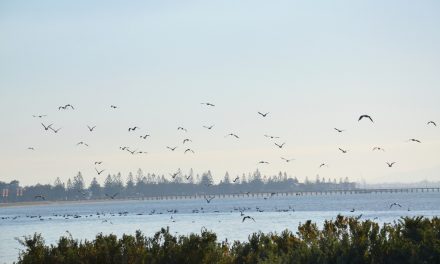Two weeks ago, the Age reported that the locusts had arrived in Melbourne, with sightings in suburbs such as Brunswick, Carlton, East Melbourne, Doncaster East, Brighton and Berwick.
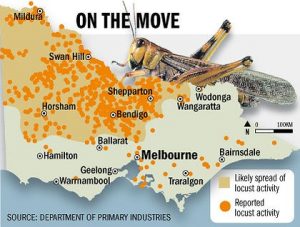 |
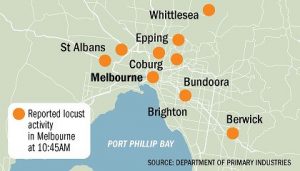 |
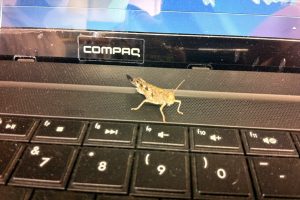 |
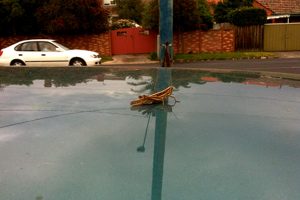 |
Images from an article published on 12 Nov 2010 in The Age
I was telling my wife to look out for locusts in our garden. I have not witnessed the ravage caused by a locust plague but I can imagine that it will be appalling. Luckily the rains came which put a check on the advancement of these destructive creatures.
The Sunday Age suggested how you can help the nation: “Who can afford to put a shrimp on the barbie at $30 a kilo? There is, however, an abundance of shrimp-like creatures that are said to barbecue well. And you don’t even have to go to the supermarket. They come to you. Locusts. You’ll not only save money, you’ll save the nation. Eat locusts before they eat everything else.”
Two days ago, it was very warm and we decided to go to the Altona Beach at 7 pm. When my car reached Logan Reserve along the Esplanade, the front view was blocked by a swarm of flying insects – an amazing sight to a city bumpkin like me. I immediately exclaimed without thinking “Are these locusts?” My wife replied “No, they are dragonflies.” The following evening, we again saw the swarming of dragonflies over the beach end of Pier Street, besides Logan Reserve.
I have never seen so many dragonflies before, similiar to what is shown in the youtube video below. This video is used in a very interesting Insect Blog called The Dragonfly Woman, which the author creates as part of her Ph.D. study and which she uses to collect data on dragonflies swarming.
Video by The Dragonfly Woman
Dragonflies belong to the order Odonata, an ancient insect group and one of the earliest flying creatures on Earth. It is characterized by large multifaceted eyes, an elongated body and two pairs of strong transparent wings. Dragonflies are big, strong fliers and hold their wings perpendicular to their bodies when resting.
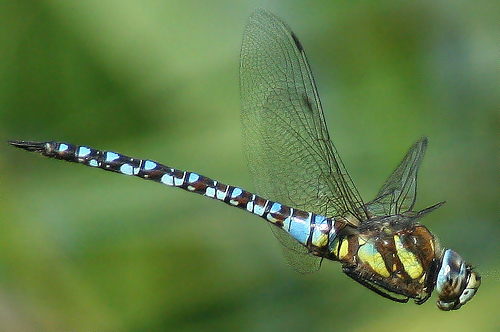
Photo by Jim Thorne
Dragonflies are usually found around lakes, ponds, streams and wetlands because their larvae, known as “nymphs” need an aquatic habitat. They are valuable predators that feed on small insects such as mosquitoes, flies, bees, ants and very rarely butterflies.
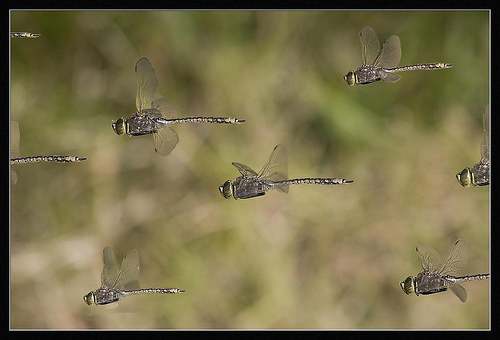
Photo by Steven Young
Dragonflies are active only on warm days, requiring an air temperature of at least 18 degrees Celsius to get them moving. The high temperature during the last 3 days had caused the dragonflies to swarm. This was clearly a static feeding swarm rather than a mass migratory swarm, as the swarm was localized to a specific area, occurred near dusk and before a cold front. There were also thousands of other small insects flying and swarming above the grass, stirred up by the winds. The dragonflies congregated to prey on this abundant food source, thereby producing the phenomenon of swarming. The swarming occurred near Logan Reserve, where the tall trees provided a shelter against strong winds.
Video showing a denser swarm
Video by Marion
Warm weather causes both dragonflies and locusts to swarm. While one is beneficial, the other wrecks immeasurable damage.




